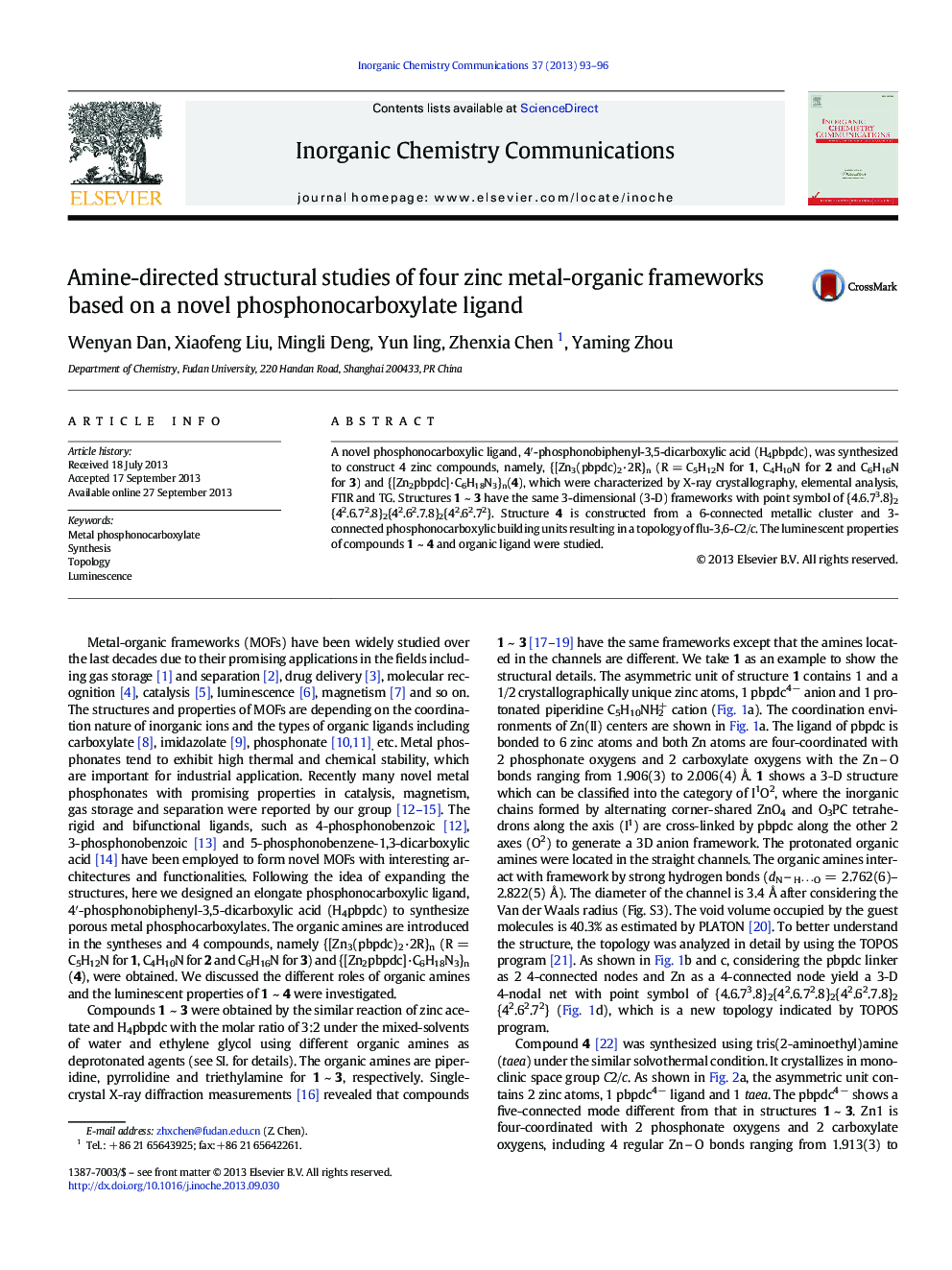| Article ID | Journal | Published Year | Pages | File Type |
|---|---|---|---|---|
| 1301857 | Inorganic Chemistry Communications | 2013 | 4 Pages |
•A novel phosphonocarboxylate ligand was firstly used to synthesize MOFs.•Four amine-directed zinc phosphonocarboxylates were obtained.•Compound 4 has a rare flu-3,6-C2/c topology.
A novel phosphonocarboxylic ligand, 4′-phosphonobiphenyl-3,5-dicarboxylic acid (H4pbpdc), was synthesized to construct 4 zinc compounds, namely, {[Zn3(pbpdc)2·2R}n (R = C5H12N for 1, C4H10N for 2 and C6H16N for 3) and {[Zn2pbpdc]·C6H18N3}n(4), which were characterized by X-ray crystallography, elemental analysis, FTIR and TG. Structures 1 ~ 3 have the same 3-dimensional (3-D) frameworks with point symbol of {4.6.73.8}2{42.6.72.8}2{42.62.7.8}2{42.62.72}. Structure 4 is constructed from a 6-connected metallic cluster and 3-connected phosphonocarboxylic building units resulting in a topology of flu-3,6-C2/c. The luminescent properties of compounds 1 ~ 4 and organic ligand were studied.
Graphical abstractOrganic amines were used to direct 4 distinct zinc metal-organic frameworks based on a novel phosphonocarboxylate ligand. They have 2 topologies of {4.6.73.8}2{42.6.72.8}2{42.62.7.8}2{42.62.72} and flu-3,6-C2/c, respectively. The roles of organic amines in the formation of frameworks were discussed.Figure optionsDownload full-size imageDownload as PowerPoint slide
